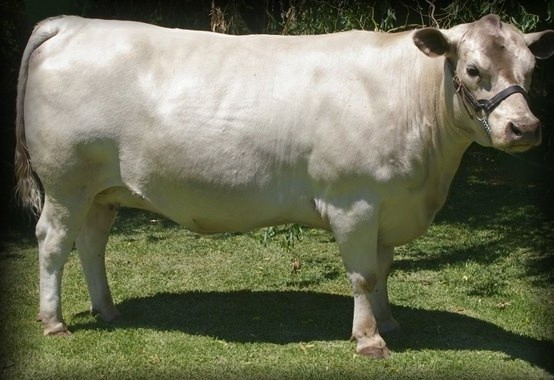|
Square Meater
The Square Meater is an Australian breed of medium-framed, polled cattle that were developed by Rick Pisaturo of Mandalong Park near Sydney in the early 1990s from a base of Murray Grey genetics. Despite their stature they have excellent muscling and perform well in steer and carcass competitions. Square Meaters are usually silver or grey in colour with dark hooves and a dark skin that reduces the chance of eye cancer and sunburned udders. The breed is noted for its good temperament, early maturity and easy-care attributes, which makes them a popular breed of cattle for smaller farms. Square Meater have small frames and short legs, and are naturally polled, but they are not considered to be a miniature breed. Mature bulls weigh between and cows range from . The calves are just when born and already have well-muscled rumps. The conformation of adult cattle resembles that of the Murray Grey The Murray Grey is an Australian breed of polled beef cattle. It originated be ... [...More Info...] [...Related Items...] OR: [Wikipedia] [Google] [Baidu] |
Square Meater
The Square Meater is an Australian breed of medium-framed, polled cattle that were developed by Rick Pisaturo of Mandalong Park near Sydney in the early 1990s from a base of Murray Grey genetics. Despite their stature they have excellent muscling and perform well in steer and carcass competitions. Square Meaters are usually silver or grey in colour with dark hooves and a dark skin that reduces the chance of eye cancer and sunburned udders. The breed is noted for its good temperament, early maturity and easy-care attributes, which makes them a popular breed of cattle for smaller farms. Square Meater have small frames and short legs, and are naturally polled, but they are not considered to be a miniature breed. Mature bulls weigh between and cows range from . The calves are just when born and already have well-muscled rumps. The conformation of adult cattle resembles that of the Murray Grey The Murray Grey is an Australian breed of polled beef cattle. It originated be ... [...More Info...] [...Related Items...] OR: [Wikipedia] [Google] [Baidu] |
Polled Livestock
Polled livestock are livestock without horns in species which are normally horned. The term refers to both breeds and strains that are naturally polled through selective breeding and also to naturally horned animals that have been disbudded. Natural polling occurs in cattle, yaks, water buffalo, and goats, and in these animals it affects both sexes equally; in sheep, by contrast, both sexes may be horned, both polled, or only the females polled. The history of breeding polled livestock starts about 6000 years BC. Terminology The archaic term or is sometimes used to refer to hornless livestock (especially cattle) in folk songs, folk tales, and poetry, and in the name of the polled Irish Moiled cattle breed. "Muley" derives from Irish and Scottish Gaelic ''maol'', and Welsh ''moel''. Genetics In cattle, the polled allele is genetically dominant to that for horns. The polled trait is far more common in beef breeds than in dairy breeds. CRISPR technology is being developed t ... [...More Info...] [...Related Items...] OR: [Wikipedia] [Google] [Baidu] |
Murray Grey
The Murray Grey is an Australian breed of polled beef cattle. It originated between 1905 and 1917 in the upper Murray River valley, on the border between New South Wales and Victoria. It is similar in appearance to the Aberdeen Angus, from which it largely derives, but is grey, silver or dun in colour. History The Murray Grey breed was developed from an initial chance mating of a black Aberdeen Angus bull and a roan Shorthorn cow in 1905 during the Federation drought. The resulting 13 dun-grey calves from these matings were kept as curiosities and then bred on the ''Thologolong'' property along the Murray River in New South Wales by Peter and Ena Sutherland. These are unusually coloured as they are black, cattle grew quickly, were good converters of feed and produced quality carcases. Local cattlemen soon became interested in the greys and began breeding them. The first larger-scale commercial herds were established in the 1940s. In the 1960s, several grey cattle breeders ... [...More Info...] [...Related Items...] OR: [Wikipedia] [Google] [Baidu] |
Udder
An udder is an organ formed of two or four mammary glands on the females of dairy animals and ruminants such as cattle, goats, and sheep. An udder is equivalent to the breast in primates and elephantine pachyderms. The udder is a single mass hanging beneath the animal, consisting of pairs of mammary glands with protruding teats. In cattle and camels, there are normally two pairs, in sheep, goats and deer, there is one pair, and in some animals, there are many pairs. In animals with udders, the mammary glands develop on the milk line near the groin, and mammary glands that develop on the chest (such as in humans and apes and elephants) are generally referred to as breasts. Udder care and hygiene in cows is important in milking, aiding uninterrupted and untainted milk production, and preventing mastitis. Products exist to soothe the chapped skin of the udder. This helps prevent bacterial infection, and reduces irritation during milking by the cups, and so the cow is less likely to ... [...More Info...] [...Related Items...] OR: [Wikipedia] [Google] [Baidu] |



